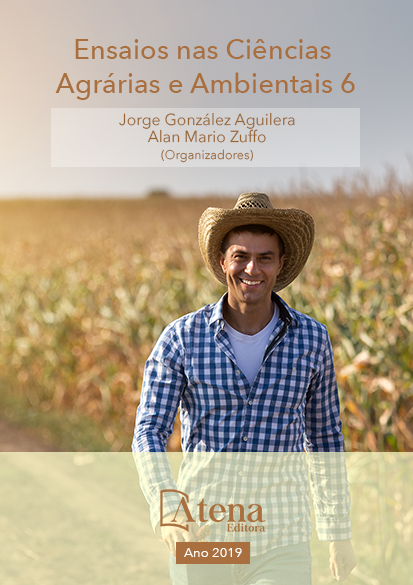
QUALIDADE TECNOLÓGICA DE FEIJÃO BRS ESTILO SUBMETIDO À DIFERENTES TEMPERATURAS DE SECAGEM
A secagem é um processo
necessário para a preservação da qualidade
de grãos colhidos com teor de água elevado,
porém, quando conduzida com temperatura
inadequada, pode promover alterações físicoquímicas que modificam a qualidade do
produto. Objetivou-se com o presente trabalho
avaliar o efeito de diferentes temperaturas de
secagem na qualidade tecnológica dos grãos
de feijão carioca cv. BRS Estilo. O material,
colhido com aproximadamente 20% de teor
de água em base úmida (b.u.), foi submetido à
secagem em secador de camada fixa horizontal
com ventilação forçada, nas temperaturas de
40, 50, 60 e 70 °C, até atingir 11 ± 0,3% (b.u.).
A qualidade tecnológica foi avaliada por meio
do teste de cocção, sólidos solúveis totais e
sólidos solúveis do caldo de cozimento. Com
base nos resultados, pôde-se concluir que, o
aumento da temperatura de secagem implica
na redução de grãos inteiros após o cozimento
e em aumento da porcentagem de embebição
antes do cozimento e dos sólidos solúveis
totais e sólidos solúveis do caldo de cozimento.
O tempo médio de cocção e a porcentagem
de embebição durante a cocção não foram
influenciados pela temperatura de secagem.
QUALIDADE TECNOLÓGICA DE FEIJÃO BRS ESTILO SUBMETIDO À DIFERENTES TEMPERATURAS DE SECAGEM
-
DOI: 10.22533/at.ed.42119160116
-
Palavras-chave: Phaseolus vulgaris L.; sólidos solúveis; cozimento.
-
Keywords: Phaseolus vulgaris L.; soluble solids; cooking.
-
Abstract:
Drying is a necessary process
for the preservation of the quality of grains
harvested with high moisture content, but when conducted with inadequate temperature,
can promote physico-chemical changes that modify the product quality. It was aimed
with the present work to evaluate the effect of different drying temperatures on the
seedling performance, and technological and nutritional quality of grains of bean cv.
BRS Estilo. The material, harvested at approximately 20% moisture content (wet basis),
were subjected to drying in a horizontal fixed layer dryer with forced ventilation, at
temperatures of 40, 50, 60 and 70 °C until reaching 11 ± 0.3% (w.b.). The technological
quality was evaluated through the cooking test, total soluble solids and soluble solids
of the cooking broth. Based on the results, it could be concluded that increasing the
drying temperature implies reducing whole grains after cooking and increasing the
percentage of soaking before cooking and the total soluble solids and soluble solids
of the cooking broth. The average cooking time and the percentage of soaking during
cooking were not influenced by the drying temperature.
-
Número de páginas: 15
- Geraldo Acácio Mabasso


